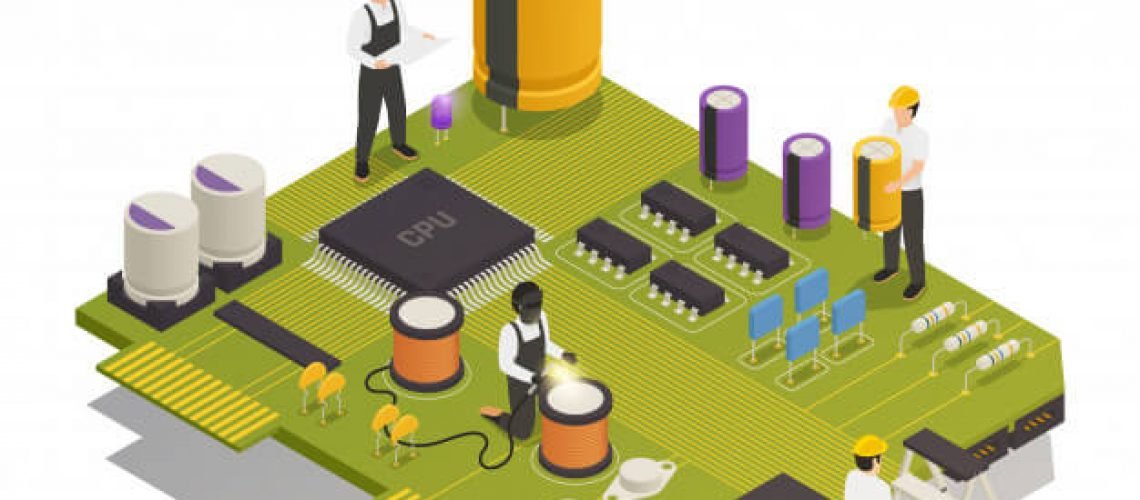1. The larger the capacitor capacity, the better.
Many people tend to love to use large-capacity capacitors in the replacement of capacitors. We know that although the larger the capacitor is, the better the ability to provide current compensation for the IC. Not to mention that the increase in capacitance brings about a larger volume, which increases the cost and also affects airflow and heat dissipation. The point is that there is a parasitic inductance on the capacitor and the capacitor discharge loop will resonate at a certain frequency point. At the resonance point, the impedance of the capacitor is low. Therefore the impedance of the discharge loop is minimal and the best replenishment of energy is achieved. However, when the frequency exceeds the resonance point, the impedance of the discharge circuit begins to increase and the capacitor’s ability to supply current begins to decrease. The larger the capacitance, the lower the resonance frequency and the smaller the frequency range in which the capacitor can effectively compensate for the current. From the point of view of ensuring the capacitor’s ability to provide high-frequency current, it is wrong to assume that the larger the capacitor, the better.
2. The more small capacitors in parallel with the same capacity, the better.
The ESR is related to capacitance, frequency, voltage, and temperature. When the voltage is fixed, the higher the capacity, the lower the ESR. The use of multiple small capacitors in parallel inboard design is mostly out of the limitation of PCB space, so some people think that the more parallel small resistors, the lower the ESR, the better the effect. This is theoretically true, but to take into account the impedance of the capacitor pin solder joints, the use of multiple small capacitors in parallel, the effect is not necessarily outstanding.
3. The lower the ESR, the better the result.
Combined with our improved power supply circuit above, the input capacitor should have a larger capacity. Relative to the capacity requirement, the requirement for ESR can be reduced appropriately. This is because the input capacitor is primarily voltage tolerant and secondarily absorbs the switching pulses of the MOSFETs. For the output capacitors, the voltage and capacity requirements can be reduced a little, while the ESR requirements are higher because here it is necessary to ensure a sufficient current throughput. However, it is important to note that the ESR is not as low as possible, as low ESR capacitors can cause oscillations in the switching circuit. Low ESR capacitors can cause oscillations in the switching circuit, and the complexity of the de-oscillation circuit can also lead to increased costs. In the design of the board, there is usually a reference value, which is used as a parameter for the selection of components to avoid the increase of cost due to the damping circuit.
4. Good capacitance means high quality.
The “only capacitance theory” was once in full swing, and some manufacturers and media have deliberately made this a selling point. Inboard design, the level of circuit design is key. Just as some manufacturers can use a two-phase power supply to make a more stable product than some who use a four-phase power supply, the use of high-priced capacitors does not necessarily make for a good product. To measure a product, we must consider it from all angles and not exaggerate the role of capacitors intentionally or unintentionally.


